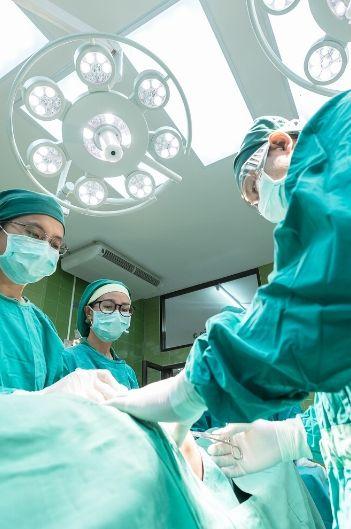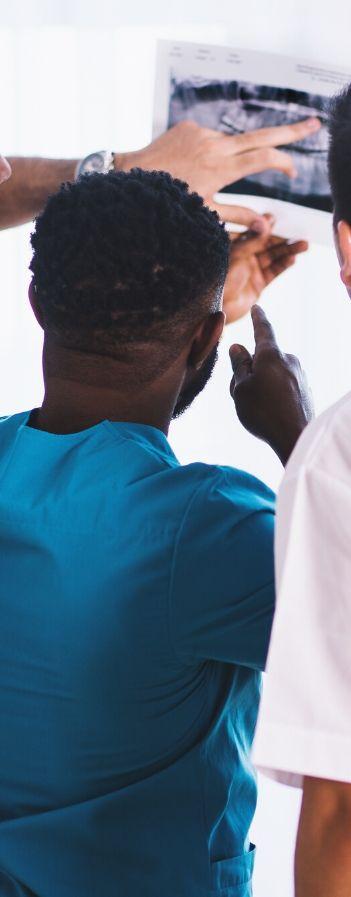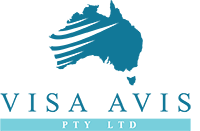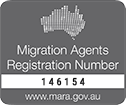Medical Practitioners and PR- the final hurdle.
If you are a medical practitioner from overseas, it is very likely that your pathway to Australia was a long and complex one. Now that you are here, your skills are highly sought after, particularly in regional areas. How can you make the jump from a temporary visa to a permanent visa?
If you are a medical practitioner from overseas, it is very likely that your pathway to Australia was a long and complex one. Now that you are here, your skills are highly sought after, particularly in regional areas. How can you make the jump from a temporary visa to a permanent visa?
As a medical practitioner, you may well have a number of options, depending on whether your occupation is on the Medium to Long Term Skills Shortage List (MLTSSL), the Short Term Skilled Occupations List (STSOL) or the Regional Occupations List (ROL).

Points Tested Visas
The Skilled Independent subclass 189 visa is open to those with an occupation on the MLTSSL.
The Skilled Nominated subclass 190 visa is open to those with an occupation on the MLTSSL or STSOL and who have been nominated by an Australian State or Territory.
Each Australian State and Territory has its own list of occupations on the MLTSSL and STSOL that it will nominate for the subclass 190 visa and each State or Territory also has its own requirements for nomination. For example, some States or Territories may require you to have been living and working in that State or Territory for a certain period of time if you are applying from inside Australia or might require a certain number of years of work experience in your occupation or a high level of English language ability. It is very important to check that you can meet those requirements.
There is one catch with the points tested visas and it is one that regularly catches medical practitioners out. The skills assessment. For most medical practitioners, your registration is your skills assessment, however for the points tested visas, limited or provisional or registration is not sufficient. General, Specialist or Conditional Specialist registration is required.
Employer Nominated permanent residence – Employer Nomination Scheme subclass 186 visa
Given the incredibly low numbers of invitations per month for the subclass 189 visa, this may be the path that most medical practitioners now follow. This also has its traps for the unwary!
There are three “streams” to Employer Sponsored Permanent Residence: The Direct Entry Stream, the Temporary Residence Transition Stream and the Labour Agreement Stream.

The Labour Agreement Stream is where specific industries have agreed exemptions to the normal rules and regulations (for example, English language ability etc.) with the Department of Home Affairs due to specific skills shortages in certain occupations.
The new Designated Area Migration Schemes are a variation on this theme – employers in certain areas of Australia have been able to nominate a broader range of occupations and have been granted other exemptions because they have demonstrated that they have real difficulty in attracting skilled employees to those areas.
The Direct Entry Stream is available to those medical practitioners who have an occupation on the MLTSSL. You don’t need to have worked for your employer for a specified time before you can be nominated for this visa. It does however have a few drawbacks:
- There must be a direct employment relationship between the visa applicant and the nominator. An Independent Contractor arrangement is not sufficient for the Direct Entry Stream.
- You can apply with limited registration but this is likely to affect your ability to get a Medicare Provider Number. To find out more about this, talk to your relevant Rural Health Workforce: https://www.health.gov.au/contacts/rural-health-workforce-australia-rhwa


The Temporary Residence Transition Stream is generally available for employees who have worked for their nominating employer on a subclass 457 or TSS visa for the required length of time (either 2 or three years, depending on when the visa was granted) and whose employer want to continue to employ them. Many medical practitioners use this pathway. It has a few advantages:
- There is no need for a direct employment relationship between the visa applicant and the nominator. An ongoing Independent Contractor arrangement is sufficient for the Temporary Residence Transition Stream.
- You can apply with limited registration but this is likely to affect your ability to get a Medicare Provider Number. To find out more about this, talk to your relevant Rural Health Workforce: https://www.health.gov.au/contacts/rural-health-workforce-australia-rhwa. Most medical practitioners use their time on their subclass 457 or TSS visa to move through to General or Specialist registration which helps with this issue. Again, your relevant Rural Health Workforce is best placed to guide you through that: : https://www.health.gov.au/contacts/rural-health-workforce-australia-rhwa
There are also specific key exemptions that medical practitioners can take advantage of.
- Work for the same employer exemption – There is no requirement for you to have worked for your nominating employer for either two or three years before you can be nominated in the Temporary Residence Transition Stream. Although you must be nominated by your current subclass 457 or TSS sponsor, as long as you have worked in your nominated occupation for the required two or three years, whether or not you have worked for your current sponsor for two or three years is irrelevant. Essentially the two or three year requirement becomes a requirement to have worked in your nominated occupation while holding a subclass 457/ TSS visa for the two or three years, not to have worked for your nominating employer for that period.
- Age exemption – Regional Australia – The main applicant for a skilled visa generally has to be under 45. If you are a medical practitioner who has practiced in Australia for at least 3 years while holding a subclass 457 or TSS visa and at least 2 of those three years were spent working in “Regional” Australia, then the age limit doesn’t apply to you.
- Age exemption – Fair Work High Income Threshold – Another way around the age limit is to show that you have worked in your nominated occupation in Australia for at least three years while holding a subclass 457 or TSS visa and that during each of those three years you earned at least the Fair Work High Income Threshold amount (currently $148,700 for the year 01/07/2016 to 30/06/2020, details for previous years can be found here: https://www.fairwork.gov.au/library/k600486_high-income-threshold-amounts#
New “Regional” Visas – Subclass 491 Skilled Work Regional (Provisional) Visa and the subclass 494 Skilled Employer Sponsored Regional (Provisional) visa
From 16/11/2019, you can no longer apply for the subclass 489 Skilled Regional (Provisional) visa and the Direct Entry Stream of the subclass 187 Regional Sponsored Migration Scheme Visas (certain transitional provisions are in place to allow people holding subclass 457/ TSS visas to transition to permanent residence via the Temporary Residence Transition Stream of the subclass 187 visa).

The Subclass 491 visa is a points tested visa which replaces the subclass 489 visa. The subclass 484 visa is an employer nominated visa. Both visas are stepping stones to permanent residence – the subclass 191 visa.
The subclass 491 visa has two steams. The first is the State/ Territory Nominated Stream the second is the Family Sponsored Stream. Our blog on this visa will give you more information about the visa: https://visaavis.com.au/2019/11/21/the-subclass-491-skilled-work-regional-provisional-visa/.
The subclass 491 visa has the same drawbacks as the other points tested visas, namely that you must be under 45 and limited or provisional or registration is not sufficient. General, Specialist or Conditional Specialist registration is required.
The Subclass 494 visa will be very familiar to you from your experience of the subclass 457/ TSS process. Our blog about the visa is here: https://visaavis.com.au/2019/11/21/the-subclass-494-skilled-work-regional-provisional-visa/.
The positive news is that although you must generally be under 45 to apply for the visa, the age exemptions set out above (the “Regional Australia” and the “Fair Work High Income Threshold” exemptions) apply to this visa. If you can meet those requirements, you can apply for a subclass 494 visa after you are 45.
At this early stage, it isn’t clear from the Department of Home Affairs’ policy whether or not limited or provisional registration is sufficient to meet the skills assessment requirements for this visa. The Migration Institute of Australia is following this up with the Department of Home Affairs and we’ll update this blog as soon as we have an answer.
Check your eligibility first!
As always, this blog is a very general overview and doesn’t cover all the nitty gritty of the visas and exemptions discussed requirements for these visas.
If you are thinking about handling your own visa application, it’s definitely worth getting a migration professional to review your documentation first to make sure that you can tick all the Department’s boxes.
Getting an application refused because you either didn’t meet the requirements or didn’t provide enough evidence to demonstrate that you met the requirements is a very expensive mistake to make and is one that can have consequences for your visa options going forward!
Contact us to find out more:
E-mail esther@visaavis.com.au
Call 0477711778
Visa Avis – working with you on your. Australian journey.
Esther Thurbin
MA Hons (Oxon) MMIA
MARN 1461654


